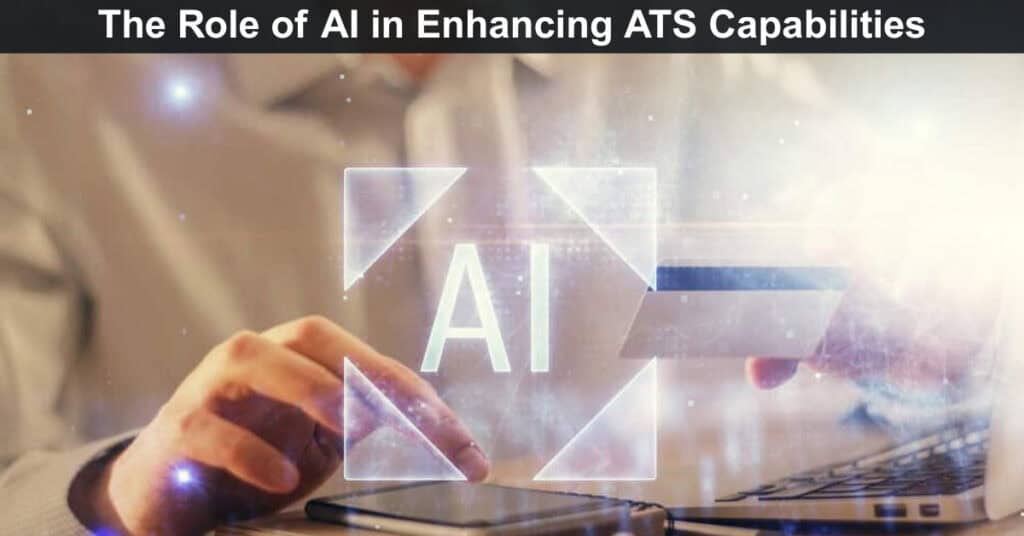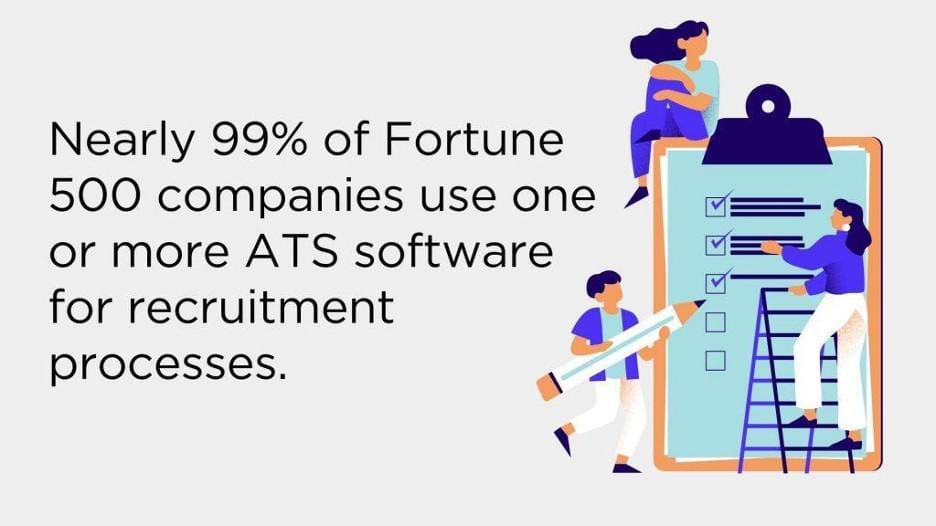
Using AI in resume screening and the overall hiring process helps reduce costs and makes HR teams more productive by finding the right experts for the organization. This is why companies are investing in HR technology. However, chances are it’s not their top priority because even the most advanced AI tracking system can’t completely replace humans in selecting the right candidates.
What’s more, laws and regulations are slowing the full use of AI in recruiting because the technology must be proven not to violate workers’ rights. Ethical concerns also affect the widespread use of AI in this area. Despite these challenges, AI is already used in corporate applicant tracking systems (ATS). So far, recruiters are using AI-based ATSs to find the best talent while speeding up their workload. But that’s not the full range of features and benefits of AI tracking systems.
In this article, we’ll look at how AI is being applied and what the results are.
What is an AI-based Applicant Tracking System (ATS)?
AI-enabled Applicant Tracking Software (ATS) is a specialized software designed to optimize hiring by automating various recruitment tasks. In the past, ATSs mainly stored and processed resumes. However, current ATSs, due to AI-powered algorithms, offer much more than just storage. Companies that are leveraging or even creating a custom AI tracking system aren’t just transitioning from paper to digital.
If you dig into the relevant case studies, you’ll find that these companies adopt a data-driven, intelligent strategy for sourcing, screening, and hiring candidates. This transformative approach to hiring sets them apart from the competition by minimizing candidate selection errors, accelerating job closures, and optimizing costs.
So, how exactly does AI improve ATS and impact resume screening?
How AI Boosts ATS Performance and Recruiting

Before delving into AI’s impact on ATS efficiency, it’s important to recognize that ATS is no longer just a nice add-on but an essential piece of software for businesses to thrive. Nearly every Fortune 500 company already uses an ATS. In addition, the adoption of AI in recruiting is expected to skyrocket, with 81% of companies surveyed planning to invest in AI-powered solutions to automate and improve their recruiting processes.
It seems organizations should consider automated tracking systems (ATS) a critical tool for optimizing recruiting and preventing lag. This is all the more important given artificial intelligence’s significant role in recruiting and how it empowers ATS.
1. Application Processing is Getting Faster and More Efficient
The introduction of AI into ATS has revolutionized the way applications are processed. Today, recruiters use AI-based applicant tracking systems to find the right talent, but ten to fifteen years ago, screening resumes was a slow and error-prone task for recruiters who manually went through stacks of resumes. As a result, valuable candidates were often overlooked due to human error and bias.
Today, AI in ATS can efficiently process large volumes of applications. It analyzes resumes for specific keywords, skills, and qualifications, ensuring that only the most qualified candidates move forward. This automation dramatically reduces recruiters’ time and effort on initial screening and increases the chances of hiring the best candidates. iSmartRecruit—a leading alternative to Manatal, leverages AI to streamline this process, helping companies identify top talent faster and more accurately than ever before.
2. Hiring is Faster and Cheaper for Businesses
Instead of just storing data, as in the past, modern AI-powered systems quickly find the right people for the job. Instead of just storing data, as in the past, modern AI recruiting tools–powered systems quickly find the right people for the job. This means less work for recruiters and faster hiring without sacrificing quality. It helps companies save money by reducing hiring costs and getting skilled workers on board faster. How does it work so fast?
- Making tasks that used to take a lot of time get done in seconds. This saves a lot of money.
- Companies can downsize or hire more people to make even more money.
- Because AI Tracking systems help select the best candidates, companies are less likely to hire the wrong person and waste money.
- This also means they are more likely to retain their employees long-term, saving them time and money by not hunting for new hires.
In short, AI makes hiring more accessible and cheaper by reducing manual work, saving money, and faster matching of the right people.
3. An AI-based ATS Improves Candidate Matching
Finding the right candidate with the right skills for a job has always been challenging. In the past, recruiters had to manually match candidates to job requirements, often leading to suboptimal hires. Now, ATS is screening CVs via AI. AI-driven ATSs use machine learning algorithms and natural language processing (NLP) to meticulously analyze job descriptions and candidate information, identifying the best matches by evaluating context and keywords.
Moreover, AI minimizes hiring bias by assessing candidates solely on their qualifications and experience, disregarding gender, ethnicity, and other personal characteristics. This integration of AI with ATS marks a significant advancement in candidate screening, making the process faster, more efficient, fairer, and more accurate.
4. AI Tracking Systems Improve Communication and Company Reputation
Despite the rapid advancement of technology, effective human communication as well as the importance of business relationships with stakeholders remain vital. This is especially true in recruiting, where communication can make or break a candidate’s experience and the company’s reputation. AI technology has transformed communication in hiring, enabling HR professionals, recruiters, management, and candidates to interact in unprecedented ways.
Key improvements AI brings to recruitment communication:
- Instant Candidate Responses: Chatbots and automated messaging provide rapid answers to queries and timely updates on application status.
- Reduced Recruiter Workload: AI handles routine inquiries about the application process, job details, and company culture, freeing recruiters for higher-value tasks.
- Seamless Scheduling: Automated interview scheduling coordinates availability across candidates and interviewers, reducing delays and no-shows.
- Consistent Candidate Experience: Standardized communications ensure every candidate receives the same clear, professional information.
- Improved Employer Brand: Faster, transparent communication enhances candidate perception of the company and strengthens overall reputation.
These enhancements create a positive experience for candidates, making them feel respected and engaged and reducing the likelihood they will look elsewhere.
5. AI in ATS Reduces Bias
Inclusion and diversity are crucial to modern organizations, and bias has no place in hiring. However, bias can creep into the process without us realizing it. Before AI, it was difficult to identify and remove these biases. But now, thanks to automated tracking systems, we can make hiring fairer. AI looks at candidates without bias, focusing only on their skills and experience. It doesn’t care about things like photos, age, or nationality.
This means the focus is on what candidates can do, which is great news. AI also helps reduce bias by being consistent. It doesn’t get tired or cranky like humans, so every candidate is evaluated similarly. Additionally, you can program AI to ensure a diverse workforce, which makes the workplace more inclusive. So, this is it: The AI tracking system helps make hiring fairer and more inclusive, creating a better workplace and attracting top talent.
Final words
As you may have already discovered, AI is not a luxury but a recruitment necessity. Despite some challenges (e.g., ensuring compliance with employment law), AI-powered applicant tracking systems (ATS) are revolutionizing the hiring process by increasing efficiency and improving the quality of hires. By implementing an AI tracking system, companies can streamline hiring, reduce bias, and create a more inclusive workplace. And of course, don’t forget about the cost and time savings.
Embracing AI now will give companies a competitive edge in attracting top talent and driving success. So don’t wait – start implementing AI in your recruiting processes today to stay ahead of the curve and unlock the full potential of your workforce.
Suggested articles:
- How AI is Transforming Modern Recruitment Practices
- The Benefits of Using an AI Contract Generator for Businesses
- How to Make AI More Effective for Your Business
Daniel Raymond, a project manager with over 20 years of experience, is the former CEO of a successful software company called Websystems. With a strong background in managing complex projects, he applied his expertise to develop AceProject.com and Bridge24.com, innovative project management tools designed to streamline processes and improve productivity. Throughout his career, Daniel has consistently demonstrated a commitment to excellence and a passion for empowering teams to achieve their goals.